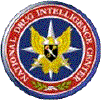GHB (gamma-hydroxybutyrate) is a powerful central
nervous system depressant that the human body produces in small
amounts. A synthetic (man-made) version of GHB was developed in the
1920s as an anesthetic. Individuals abuse synthetic GHB because of its
euphoric and sedative effects. Because of its anesthetic properties,
GHB also has been used by sexual predators to incapacitate their
victims.
GHB analogs, which include GBL, BD, GHV, and GVL, are
drugs that possess chemical structures that closely resemble GHB.
These analogs produce effects similar to those associated with GHB and
are often used in its place.
GHB and its analogs typically are sold either as a
white powder or as a clear liquid. The drugs often have a salty
taste.

Coffeyville (KS) Police Department
How are they abused?
GHB and its analogs usually are taken orally. Because
of the drugs' salty taste, they often are mixed with a flavored
beverage. Sexual predators who administer GHB or an analog to their
victims typically slip the drug into a drink, often at a bar or party.
To Top
Who uses GHB and its
analogs?
Although information about the extent of GHB and
analog use in the United States is limited, the data that are
available indicate that these drugs primarily are used by young
people. According to the Drug Abuse Warning Network, individuals aged
18 to 25 account for 58 percent of all GHB mentions in drug-related
emergency department visits.
GHB use among high school students is a particular
concern. Nearly 2 percent of high school seniors in the United States
used the drug at least once in the past year, according to the
University of Michigan's Monitoring the Future Survey.
What are the risks?
Use of GHB and its analogs can cause nausea, vomiting,
delusions, depression, dizziness, hallucinations, seizures,
respiratory distress, loss of consciousness, slowed heart rate,
lowered blood pressure, amnesia, coma, and death. Mixing GHB or its
analogs with alcohol is particularly dangerous because alcohol
enhances the drug's depressant effects.
Sustained use of GHB or its analogs can lead to
addiction, and chronic users experience withdrawal symptoms when they
stop using the drugs. These symptoms include anxiety, insomnia,
tremors, tachycardia (abnormally fast heart rate), delirium, and
agitation. Users may experience these symptoms within 1 to 6 hours of
their last dose, and the symptoms may persist for months.
In addition to the risks associated with the drugs
themselves, individuals who use GHB or its analogs may put themselves
at risk of sexual assault. While many sexual predators lace
unsuspecting victims' drinks with the drugs, others offer GHB or an
analog to victims who consume the drug without understanding the
effects it will produce.
What are they called?
The most common names for GHB are Georgia home boy, G,
goop, grievous bodily harm, and liquid ecstasy. (Please see the Street
Terms text box below for additional names.)
Street Terms for GHB and Its Analogs
|
Cherry meth
Fantasy
G-riffic
Jib
Liquid E
Liquid X
Organic quaalude |
Salty water
Scoop
Sleep
Sleep-500
Soap
Vita-G |
|
To Top
Are GHB and its analogs illegal?
Yes, GHB and its analogs are illegal. GHB is a
Schedule I substance under the Controlled Substances Act. Schedule I
drugs, which include heroin and MDMA, have a high potential for abuse
and serve no legitimate medical purpose. GHB analogs are treated as
Schedule I drugs if they are intended for human consumption.
Other products of interest:
Check out Fast Facts on:
- Crack cocaine
- Crystal methamphetamine
- Heroin
- Inhalants
- Jimsonweed
- Ketamine
- Khat
|
- LSD
- Marijuana
- MDMA
- Methamphetamine
- PCP
- Powdered cocaine
- Prescription drugs
- Yaba
|
|
Also available from NDIC:
- Huffing--The Abuse of Inhalants
- Prescription Drug Abuse and Youth
- Drugs, Youth, and the Internet
For more information on illicit drugs check out our web site at:
www.usdoj.gov/ndic. Call 814-532-4541 to request NDIC products.
Our addresses:
National Drug Intelligence Center
319 Washington Street, 5th Floor
Johnstown , PA 15901-1622
Telephone: 814-532-4601
FAX: 814-532-4690
NDIC Washington Liaison Office
8201 Greensboro Drive, Suite 1001
McLean , VA 22102-3840
Telephone: 703-556-8970
FAX: 703-556-7807
NDIC publications are available on the following web sites:
ADNET http://ndicosa
LEO home.leo.gov/lesig/ndic
RISS ndic.riss.net
INTERNET www.usdoj.gov/ndic
To Top
|


